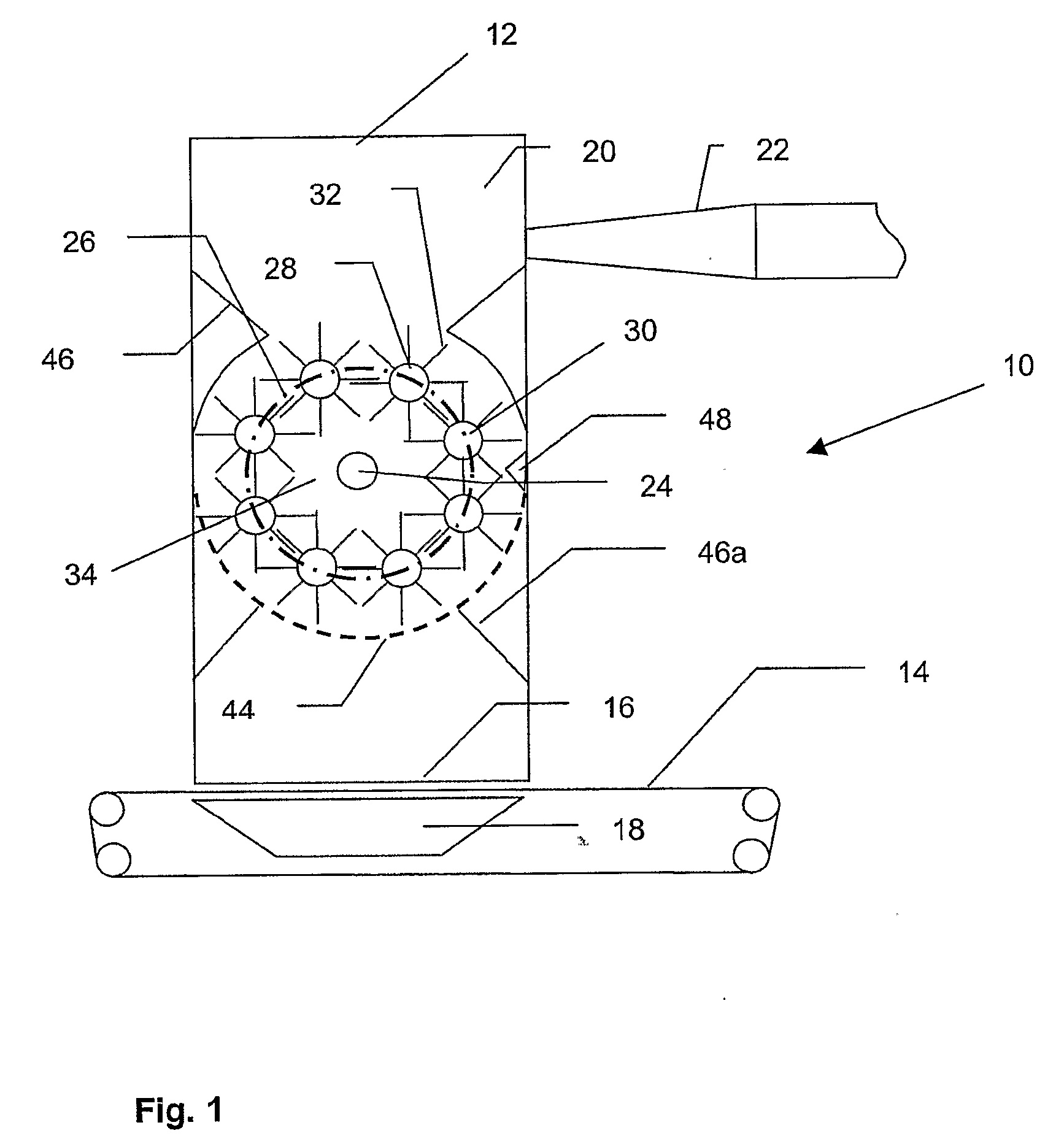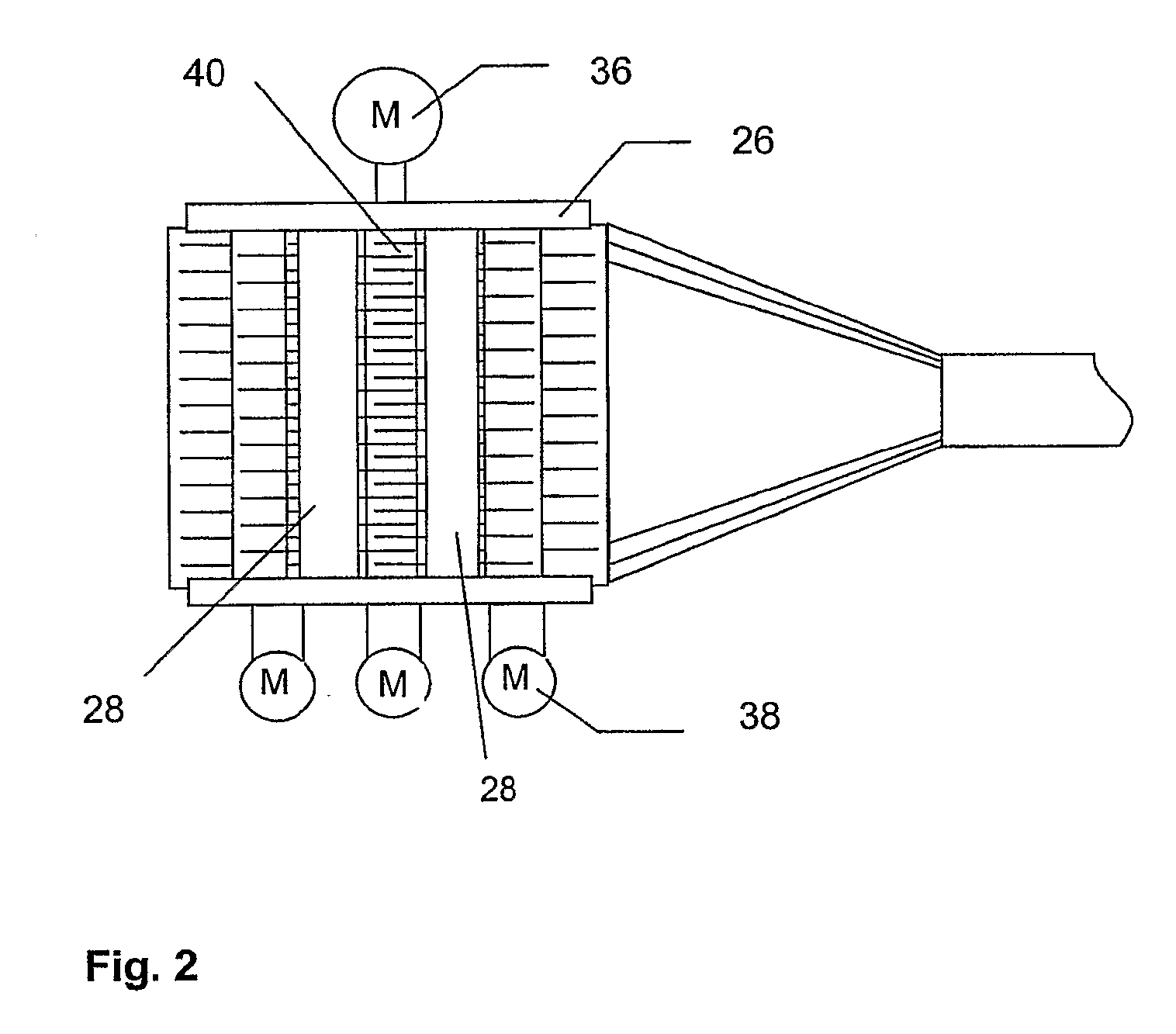Forming Head and Process for the Production of a Non-Woven Fabric
a non-woven fabric and forming head technology, applied in the field of fabric production, can solve the problems of increased machine complication and expenditure, inability to use processes and apparatuses, and low production efficiency, and achieve the effect of greater fibre opening capacity
- Summary
- Abstract
- Description
- Claims
- Application Information
AI Technical Summary
Benefits of technology
Problems solved by technology
Method used
Image
Examples
Embodiment Construction
[0027]The installation 10 shown in FIG. 1 for the production of a non-woven fabric includes a forming head 12 arranged above a conveyor belt 14. The conveyor belt 14 is air-permeable. The forming head 12 has a lower deposit opening 16 above the conveyor belt 14. A suction box 18 is arranged beneath the conveyor belt 14 and beneath the deposit opening 16.
[0028]A directed air flow can be produced by means of the suction box 18 through the forming head 12, out of the deposit opening 16, through the conveyor belt 14, and into the suction box 18.
[0029]Fibres which are deposited on the conveyor belt 14 by the forming head 12 can be securely sucked on to the conveyor belt 14 by means of the air flow. Fibres deposited on the conveyor belt 14 by the forming head 12 form a fibre bed (not shown) on the conveyor belt 14. By virtue of the fact that the conveyor belt 14 is continuously driven in circulation, a continuous fibre bed can be produced on the conveyor belt 14 if fibres are at the same ...
PUM
| Property | Measurement | Unit |
|---|---|---|
| length | aaaaa | aaaaa |
| length | aaaaa | aaaaa |
| lengths | aaaaa | aaaaa |
Abstract
Description
Claims
Application Information
 Login to View More
Login to View More - R&D
- Intellectual Property
- Life Sciences
- Materials
- Tech Scout
- Unparalleled Data Quality
- Higher Quality Content
- 60% Fewer Hallucinations
Browse by: Latest US Patents, China's latest patents, Technical Efficacy Thesaurus, Application Domain, Technology Topic, Popular Technical Reports.
© 2025 PatSnap. All rights reserved.Legal|Privacy policy|Modern Slavery Act Transparency Statement|Sitemap|About US| Contact US: help@patsnap.com


